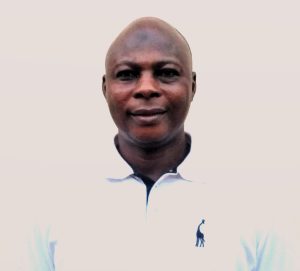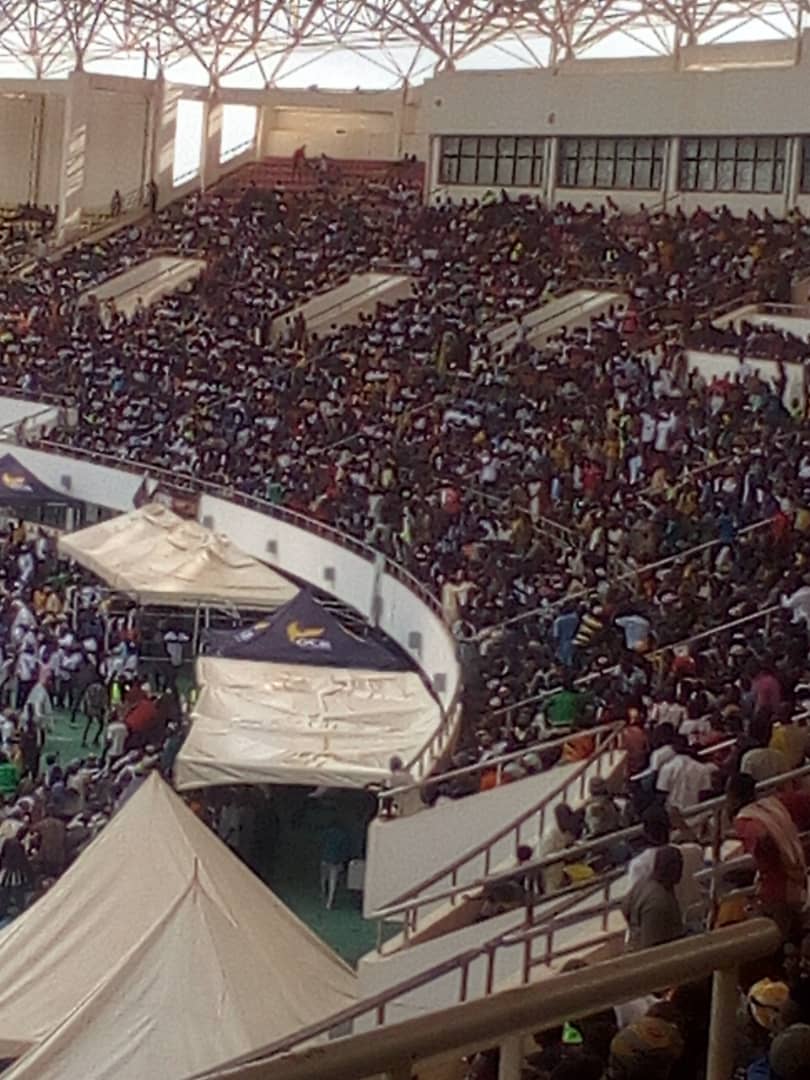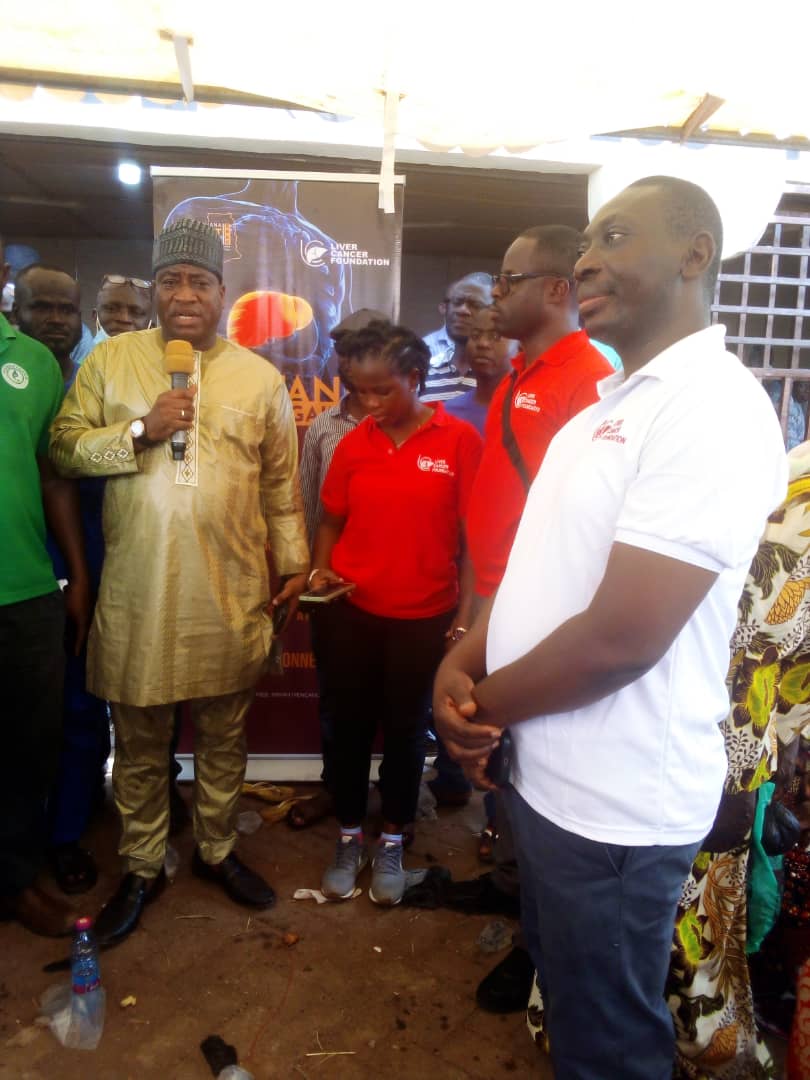By: Mohammed A. Abu
The official endorsement of the rebranding of the 2023 edition of the age-old Damba by the Kingship of Dagbon,in Ghana’s Northern region for peace and development, marked a great turning point in history of the festival. A full programme line up heralded the event making it eventful than all previous ones.
Major side attractions like the first ever football match between historical playmates of the Savulgu and Kumbungu townships to compete for the Gbewaa Damba Trophy,horsemanship competition,Dagbon traditional menu cooking competition among others,indeed enriched the Dagbon Damba flavour.
For when did this most patronized festival in the entire Dagbon’ start,read on now
Background
Even though Damba is today the single largest annual traditional festival in Dagbon celebrated with pomp and pageantry amidst traditional drumming and dancing, it is also said to have Islamic historical antecedents. Thus, it is said to be a fusion of some aspects of Islam and Dagbon’s cultural drumming and dancing in a most harmonious manner.
The Wangara or Mende Clerics factor is said to have predated the Hausa clerics factor so far as the early presence of Muslims in Dagbon is concerned. The introduction of Islam to Dagbon some observers note, widened the cultural dimensions of the Kingdom.
In some written accounts mention is made about the earliest Mende clerics who had settled at Sabari, near Yendi in Dagbon around 1680 and traced their ancestry to Shaykh Sulayman Bagayugu of Timbuktu.
Some oral accounts say among the early day clerics of notable importance who were said to have played significant roles worthy of mention in Dagbon was the Mende cleric who had been elevated to the status of the Imam of the legendary mosque of Sabali (Yeri Na Yamusah Al Wagari. Then also, is the Hausa cleric, Mallam Mahama Zangina al Kashnawi who is also said to have settled at Kamshegu.
The early day emigrant clerics from various ethnic kingdoms and states across pre-colonial West Africa to Dagbon oral and written accounts say adopted tactful diplomacy with their rulers.
They are said to have kept the practice of Islam within their own circles and avoided an openly missionary approach that could draw them into loggerheads with Dagbon’s traditional religionists. They only hoped and prayed that one day someone from a royal setting would embrace Islam and make a strong pitch for Islam in Dagbon and it was to come to pass.
The Zanginan Age, the Golden Age of Islam in Dagbon
The conversion to Islam of one of Dagbon’s Princes by a Hausa cleric, Mallam Mahama Zangina al Kashnawi is said to have been a great turning point for Islam in Dagbon.
The Muslim convert Prince is also reported to have embarked upon trade missions to a number of ethnic states including Wangara land (today’s Mali/Northern Ivory Coast)) Hausa land (in today’s Northern Nigeria) among others.
His deep attachment to today’s Northern Nigeria city of Kano is said to have earned him among Dagbamba(Dagbombas) a nickname,” Mahmadu Kano” (Mohammed Kano) which later was to be an appellation for him corrupted for Dagbani (language of the Dagomba People) as “Mankaanu”.
Oral accounts have it that he scaled up his knowledge in Islam by also schooling in Hausa land before he was to later return to Dagbon to contest for Dagbon Kingship and became King.
He is said to have adopted the name of his Hausa cleric who had converted him to Islam, Mallam Mahama al Zangina (I am going to build in Hausa) from Kastina, Hausa Land in present day Nigeria. His skin name Na Zangina attracts the appellation,” Mankaanu” or better to be put,” Mahmadu Kano”.
The Historic Pact at Sabali Mosque
Both oral and written accounts talk about Na Zangina’s historic visit to Sabali shortly after ascending to the throne. At the legendary Sabali mosque thanksgiving and special prayers was made for Dagbon to witness a golden age.
Another important aspect of the trip was said to be a historic pledge he had made before a number of clerics assembled at Sabali for the prayers including his very own, Mallam Mahama Al Zangina, Al Kashnawi
Na Zangina from oral sources was said to have held a copy of the Holy Qur’an and pledged to make a strong pitch for Islam in Dagbon via making open Islamic missionary activities permissible in the Kingdom for the first time.
Na Zangina’s Administration’s Policy Framework for Islam in Dagbon (1648 – 1677)
Na Zangina during his reign is said to have kept to his word and even went beyond the expectations of the clerics. He is reported to have adopted a most favorable open door policy towards Islam. Under an open door policy, he is said to have gone the extra mile by sending emissaries to the surrounding neighboring ethnic Kingdom and states to invite known Islamic clerics of great repute there to consider relocating to Dagbon.
Notable among the emigrant clerics under Na Zangina’s open door policy were said to be Yidan Kambara, who migrated from Gonja Land. He was said to have been given oversight responsibility of preparing the corpse of a dead Yaa Na for burial. Another emigrant cleric was appointed “Walgu Na” or chief in charge of the preparation of the King’s spiritual fortification concoctions (‘rubutu in Hausa).
The Dagbon’s first Muslim King, oral accounts from current Moleyili sources say thought it worthy of detailing then Prince Andan Sigli to present day Burkina Faso to officially invite a very popular Mende cleric who was to be later known as Yidan Moli in Dagbon’s traditional governance landscape and the eventual principal architect of the Damba celebrated in Dagbon today.
Assigning of Islamic clerics to play certain specific roles deemed important in Dagbon’s traditional governance was first to be introduced by Na Zangina. It is however pertinent to note that Na Zangina, Dagbon’s first Muslim convert, King was the first to give an official touch to Islam in Dagbon as a ruler.
He wasn’t however, the first to introduce Islam to Dagbon for the first time in Kingdom’s history as some might have been made to believe. The presence of Islamic clerics in Dagbon according to both oral and some written accounts far predates the late 17th to early 18th Century reign of Na Zangina.
It is pertinent to also add that, Na Zangina even though was the first Muslim to have ascended to the Kingship throne of Dagbon but he was never Dagbon’s first king as some Arab historical sources tend to have misrepresented him in their writings. Na Zangina was the first 18th King of Dagbon.
Yidan Mole’s entrance into Dagbon and the Birth of Damba
Even though it was Na Zangina who is said to have officially invited Yidan Moli to Dagbon he however unfortunately did not live to see the arrival of the highly respected cleric passed on before Yidan Mole could finally arrive in Dagbon during the reign of Na Binbegu.
Yidan Mole another Mende cleric elders say, was a relative of the Imam of Sabali, Yeri Na Ya Musah al Wangari. Yidan Moli who was an emigrant Islamic cleric residing in then Moshieland (today’s Burkina Faso). His long protracted delay in relocation to Dagbon, elders say, was due to a number of factors and, couldn’t be immediate as Na Zangina had wished for it. Elders say Yidan Mole upon his arrival he first put up with his cousin the Imam of Sabali and later relocated to Kamshegu.
Na Gariba-Yidan Moli Historic Engagement
Upon ascending the Dagbon Kingship Na Gariba I was said to have engaged Yidan Moli as his personal psychic consultant and which had paved the way for the birth of what is today celebrated as Damba
Yidan Moli is said to have been holding the annual Muslim Maulid Anabi (Prophet Muhammad’s birth day celebration) as an individual scholar initiative supported by his followers. He was said to have conceived the idea of giving Damba a Dagbon state level celebration and managed to convince the Na Gariba I to buy into it.
Na Gariba elders say, also had invited Yidan Moli to settle in Yendi but upon realizing the numerical strength of his following and the accommodation problem it could post to the host town, the King decided to grant him land elsewhere to establish his independent settlement and which is today known as Moliyili.
Yidan Mole Sells Damba to Na Gariba I(1700 – 1720)
The benefits of giving the Damba official state status Yidan Moli is said to have told the Na Gariba were that marking Prophet Muhammad’s birth day anniversary would attract Allah’s blessings for his Kingdom, it would serve as a medium for annual renewal of allegiance to him by his paramount chiefs that would also come with gifts, among others that would inure to Dagbon Kingdom’s well-being. Na Gariba, elders say after carefully thinking through the proposal finally embraced it.
The Damba Ecosystem
The word Damba is said to be derived from the Mende root words, “Don” (dance) and “Ba” (big),” Donba” or big dance but corrupted for Dagbani usages as “Damba”. Yidan Moli after getting the buy-in of Na Gariba of celebration of Damba at state level was also said to be very conscious about its sustainably. Thus he specially engineered Damba as a blend the Islamic Maulid a Nabi with Dagbon’s cultural performance and tradition.
Sighting of the Damba Moon
The sighting of the crescent heralds the preparations towards the Damba festivities. Planning on when is most appropriate to be earmarked for the Damba festivities is based on broad based consultation among Yidan Moli and the Kingship and elders.
Somo or Mole Damba
A measure Yidan Moli is said to have adopted towards ensuring the long term sustainability of Damba was the institutionalization of his own edition of the Damba to be celebrated in his camp (Somo or Mole Damba) which could be said to the preceding minor Damba edition.
This entails the slaughtering of the Damba bull to symbolize the birth of the Holy Prophet Muhammad(S.A.W.) and goes with special prayers for the Holy Prophet Muhammad(S.A.W.)
A special side attraction is Yidan Moli himself doing the Damba dance himself and known as ‘SOMO’ or MOLI DAMBA. The King as a goodwill gesture provides Yidan Moli with some foodstuff, money and a bull for the event and his representative is therefore to participate in the ceremonies and merry making. Yidan Moli by tradition sends a fore arm of the slaughtered Damba to the King through his elders.
Na Damba
The Na or King’s Damba which is preceded by the Moli Damba or minor Damba is the major component of the annual Damba festival celebrated as the Kings edition of the event. The major paramount chiefs across the Dagbon Kingdom who serve the King also have their editions of the Damba
The Damba Rice
The rice to be used for the preparation of the Damba feast during the Na Damba form an important integral part of it. This is to the extent that, someone was to be charged with oversight responsibility of growing the rice and presenting to the king through his elders ahead of the Damba festivities
Kor Mori’s Role
The ‘Kori Mori” or the cultivator of grass an idiomatic expression of the rice crop He grows the Damba rice harvest it and sends it to the King in Yendi through his appropriate state elders assigned to receipt and formal presentation to the King.
Kaanshgu near Savulgu in Western Dagbon was where Kor Mori was granted to settle and engage in the cultivation, harvesting and sending of the Damba rice to Yendi as one of the key preparations towards the annual Damba festival.
Cleansing of the Uncooked Damba Rice (“Stones Picking”)
Cleaning of the cultivated rice is another integral function preceding the Na Damba edition. Here a blend of religion and tradition is at its best as clerics do their bit using their hands to ensure that impurities such as stones and chaff are removed from the rice. They pass it on to the traditionalists who uses a calabash to take a portion of the rice for their bit of the cleansing.
Elders intimate that the “Shinkaafa guga gahimbu” translated, “rice cleansing” is only symbolic and constitutes a key ritual preceding the Na Damba during which Yidan Moli and other clerics converge to say special prayers for the King and Dagbon as a Kingdom.
What is more they say, given present day mechanization of rice, the Damba meal rice wouldn’t have that much of stones requiring such a gathering to be able to remove them before it is used for cooking. If it were actually intended to remove stones and impurities from the rice, it would have since completely lost its relevance in this modern day era.
The Damba Sacrificial Cow Ritual
The Damba sacrificial cow is a second and most important symbolic ritual that precedes the Na Damba and intended to mark Prophet Muhammad’s(S.A.W.) birth and outdooring which goes with a sacrificial animal as per Islamic tradition best practice.
While the cow is tethered, Muslim clerics led by Yidan Moli offer special benedictions to the Prophet in circular motion. The doing of with doing three circuits while the sacrificial animal in this case, a bull is tethered to symbolize the sacrificial ram for outdooring the newly born as per Islamic prophetic tradition. His Royal Majesty, Ndan Yaa Naa is to demonstrate his vigour by dancing three times around the cow
It is interesting to note that in the Wala version of Damba, in Ghana’s Upper West Region, His Royal Highness, the Wa Na, is on his part required by tradition, to jump over the cow three times to assure his people that he is in good health to continue with his great task of leading them.
The Muslim clerics component of special prayers goes concurrently with the Dagbon cultural drumming component. The drumming isn’t just an ordinary drum beat but really a drum beat recitation of a verse of the Holy Qu’ ran chapter Al Yassin,” Wa ilaihi turja uun” in response to the prayers of the Muslim clerics.
Recitations of benediction in Arabic to the Prophet Muhammad(S.A.W.) is also recited by the Islamic cleric Yidan Mole, while the traditionalists including the King, repeat same after him. The office of Yidan Mole has been officially charged with oversight responsibility over the Islamic component of the Damba for the past
Kings Dance Performance
The doing of the Damba dance by the King himself component is brief as he emerges during dawn on the Damba day. The King’s Damba presents a most spectacular showcase of Dagbon’s cocktail of diversified cultural performances.
Damba of the Major Paramount Chiefs
Aside the Na Damba at the seat of Dagbon Kingship, we also have the Damba of the major Paramount Chiefs in both Eastern and Western Dagbon, namely the Mion, Karaga, Savulgu, Gulpke Na, Kumbung Na, Tolon Na, among others.
Belkulsi
The wrap up or saying goodbye to the annual Damba festival is termed as the “Belkulsi” which is observed across the kingdom. Visiting homes of elders who had supported in various ways to make the Na Damba a success is intended as a thank you gesture and sign of appreciation which also marks a close of the annual Damba event until another edition arrives again.
Damba in Other States
Damba is not only celebrated by Dagbamba(Dagombas) alone but it is also celebrated among the others in the Mamprusis, Nanumbas, Wala (uses Domba rather than Damba) and Gonjas. Where and when did it start and what others did for its start with the other cultures requires some research and the Research Team of your favourite, Eco-Enviro News Africa, magazine
(An Eco-Enviro News Africa Blog Article)
References
1.A Note on the Early Spread of Islam in Dagomba by Ivor Wilks
2.Imams of Gonja the Kamaghate and the Transmission of Islam to the Volta Basin by Andreas Walter Massing
3.Muslims and Rulers during the Precolonial Period by Holger Weiss
4.AL-HAJJ SALIM SUWARI AND THE SUWARIANS: A SEARCH FOR SOURCES BY IVOR WILKS
5.Austen, Ralph, African Economic History, Internal Development and External Dependency, Currey/Heinemann, 1987
6.Lovejoy, Paul, Caravans of Kola: Hausa Kola Trade 1700-1900, OUP
7.A NOTE ON THE EARLY SPREAD OF ISLAM IN DAGOMBA by Ivory Wilk
8.Africa Remembered: Narratives of West Africans from the era of the Slave Trade Edited by Philip Curtin with Introductions annotations by Philip Curtin, G.I. Jones, et al.






